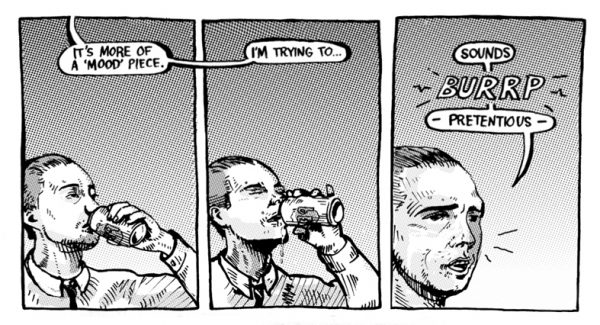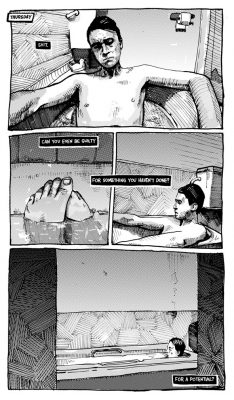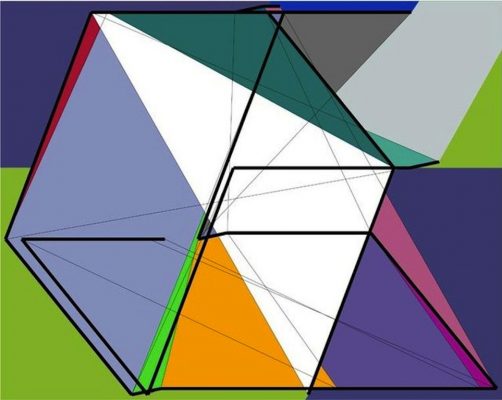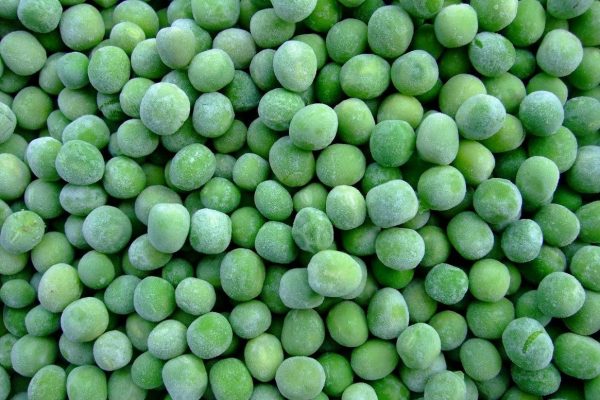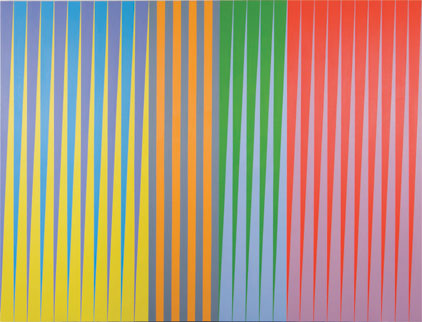‘I began at this point to feel that politics was not something “out there” but something “in here” and of the essence of my condition.’
When We Dead Awaken: Writing as Re-Vision (1972), Adrienne Rich
In 1974, just before Lynda Benglis and her dildo made the ad pages of Artforum, Robert Morris used his own shining torso to promote another exhibition. The poster depicted the artist naked to the waist, his hands manacled to a heavy chain, a spiked collar around his neck. Black aviators covered his eyes and a Nazi helmet rested on his head. At the time, he said it was ‘the only image that still had the power to shock’.
A year later, Susan Sontag refers to Morris and his poster in the essay ‘Fascinating Fascism’. The coupling of S&M and Nazi symbolism didn’t surprise her. Sontag writes: ‘never before was the relation of masters and slaves so consciously aestheticised’. Here were a set of costumes, characters, roles and rituals; the components for a master scenario were now available to everyone. This is role-play plus politics, sex games with the freedom of the world at stake: ‘The colour is black, the material is leather, the seduction is beauty, the justification is honesty, the aim is ecstasy, the fantasy is death.’
In the wake of recent mutations, fascism’s past continues to fascinate. Not that Operation Paperclip aims for ecstasy; it invokes and then inhabits a Nazi history – one that hovers between the imaginary and untold – for a more problematic, but no less tortured satisfaction. It enacts a sort of détournement, first by hijacking the past and second by hijacking a form. Here the teen coming of age narrative – a comic book staple – is flipped on its head. There are no mutant spider bites or lab experiments gone wrong; the hero of Operation Paperclip has genes that harbour a different secret. Our Superman isn’t an alien child; he’s the clone of Hitler.
Much like China Miéville’s Dial H – a reboot of the classic DC comic series Dial H for Hero – Patrick’s protagonist is a confused everyman caught up in an extraordinary situation. It’s a morality tale meets thought experiment, a story told mostly through the dialogue shared by two teenage boys. It deals with big themes like free will and determinism. After reading I told Patrick the ambition of his scope felt a bit ‘out of time’, unfashionable even. Actions are recalled from memory, nothing much happens. The narrative opens with the retelling of an incident, a scenario involving three fingers and a dog’s anus. Patrick’s used this anecdote before, in his previous book So Far, So Good, So What? We begin where his last work ended. I read this repetition as some form of disclosure; it could be retelling to re-enforce or maybe it’s re-telling to rehabilitate, a kind of catharsis.
You can’t evoke youth without gesturing to some sort of journey. This restless group are agents of change, awkward, naive, searching to belong. Thinking about adolescence involves thinking about ourselves; what we might have been, what we hoped to be. In his book Teenage: The Creation of Youth Culture 1911-1946, Jon Savage writes that untainted by death, age or compromise, black and white thinking comes easily to the adolescent mind. He argues it was this ‘quality’ that the Nationalist Socialists monopolised in their struggle for power.
The teenage persona as we know it, took shape in the closing months of the Second World War, as if fascism had to loosen its grip for this new persona to wriggle free. ‘We are rotten to the marrow’, said Hitler in a 1933 interview, ‘I am beginning with the young.’ To opponents who refused to join the Nazis he would calmly reply, ‘Your child belongs to us already… You will pass on. Your descendants, however, now stand in a new camp. In a short time they will know nothing else but this new community.’ His words, as if lifted from a speech bubble, preach the rhetoric of super villains. He wanted his boys ‘tough as leather, swift as greyhounds, hard as Krupp steel’. Belligerent, Patrick draws them soft and spotty, lost and lonely, stuck in suburban purgatory, alienated at school. He channels Nietzsche’s Ugliest Man from Thus Spake Zarathustra. This character, who has every reason to hate the world and life, is able to transcend his condition in the end. He recognises essence as an invention, something from which we can be free. The teenage body is trapped in a perpetual state of becoming, challenging this freedom with its sprouting hairs, secreting grease and hormonal imbalances.
Comic books are about more than tales of superheroes and teenage angst, they are also about time. First consider the gutters: slivers of white space that divide the individual panels. It’s here in the limbo land of narrative that the reader’s imagination must take two separate images and transform them into a single idea. We must fill in the gaps, and this process requires a certain kind of absorbed attention. Operation Paperclip is anachronistic, its structure a conceptual tool. Patrick locks time inside the panels, within these lines the narrative of the two boys plays out as it happens, these boxes contain a world. To be outside of the panel borders is to be outside of time; it’s here we find our philosophers, our men of war; the world as it exists in history. These voices of reason offer insights, warnings, they orientate the reader, they remind us what’s at stake. Occasionally this rigid splitting breaks down; at one point our protagonist speaks about his Jewish grandmother, Patrick draws her as Hannah Arendt – the likeness is deliberate but she’s not named in the story, it’s not clear whether we’re supposed to know its her. These strange collisions of imagined history and anecdotal real time storytelling are the moments when things come alive.
Sontag argued that to divide time into past, present and future is to suggest that reality is equally distributed into three parts, when in fact the past is the most real of all. She described artists as ‘memory specialists, professional curators of consciousness’. Patrick looks back to look forward, the comic book allows him to re-evaluate a history that has been and could have been.
You could argue his use of this form contributes to an ongoing ‘institutionalisation of comics’ as explored by Fabrice Stroun in his recent essay for Artforum. However Operation Paperclip is a more awkward mash up of verbi-visual forms. Its anti-authoritarian attitude and persistent confrontation with the past, references the political and aesthetic languages of protest and propaganda. Think of the leaflets, posters and flyers of radical groups: material from a time when paper oceans filled our streets. Patrick’s comic shares an economy of means with this material, their pages are black and white, the writing is by hand. In their anthology BAMN: By Any Means Necessary: Outlaw Manifestos and Ephemera 1965-70, Peter Stansill and David Zane Mairowitz trace the proliferation of these documents to shifts in the display of public discontent: ‘The picket sign dies as a medium: the ‘Alternative Press’ comes to life and spreads across two continents like a contagion.’ They describe the propagators of this material as gypsy-highway-men, prankster gangsters who ‘cover the walls of Paris with graffiti, throw smoke bombs at Dutch royalty, go agro-hunting in London’s East End and wire up fuses beneath police stations in your neighbourhood. They are the werewolves of the future drawing the blood of the past’. These groups have now disbanded, the way we protest has changed. Messages of discontent are voiced and shared via immaterial digital spaces. In the absence of paper oceans, maybe it’s up to the ‘memory specialists’ to co-opt the medium, for artists to attempt to be werewolves and for their books to draw blood too.
